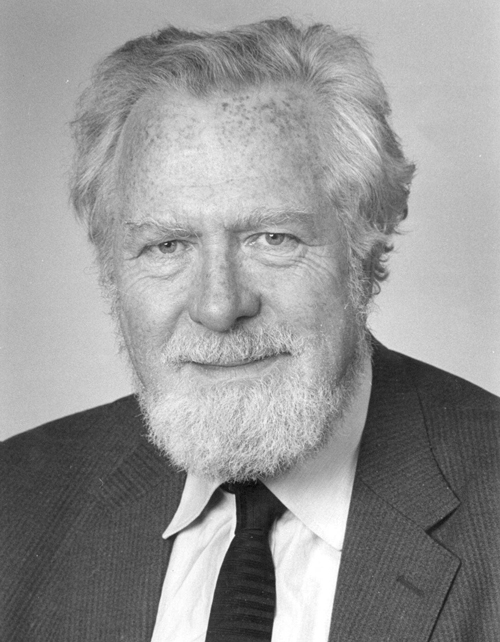When the British economist Dudley Seers was tasked with setting up the Institute of Development Studies he knew exactly who to turn to for administrative support. For, during the meeting of senior academics and the politicians at Boarstall Tower near Oxford where the decision was taken to set up an international institution focussing on development, there was one unofficial observer: Molly Beirne. At that time nobody knew what a central role she would play in setting up IDS.

In an interview with IDS, Molly explained that she was at the meeting in Boarstall Tower in 1965 because her first husband, Bill “Knocker” White, was one of the organisers of the event. Bill was the Labour Party agent for Aylesbury and the surrounding area and was a good friend of Dudley Seers and his wife Pat.
Pat was the county councillor for the parish of Brill and she would ride to Aylesbury on her motor scooter for council meetings. On these occasions, she would take the opportunity to meet with Bill and Molly at their home above the Labour Party offices. And it was this close bond that led to Bill being asked to assist with the setting up of the meeting.
The gathering at Boarstall Tower took place in a large room in “the keep”, above where Dudley lived in a “grace and favour” flat. At that time, he was working as an economist at Oxford University alongside Tommy Balogh. According to Molly, over fifty people attended the meeting where they listened to a speech by the Minister of Overseas Development Barbara Castle.
The driving force behind the meeting was Seers, who understood the need to have institutions capable of forming and developing ideas which could then be brought into practice. Indeed, he had been involved in the birth of Britain’s Ministry of Overseas Development in 1964 and formed a close working relationship with Castle.
Former IDS Director and Seer’s friend and collaborator Richard Jolly enjoys retelling the story of how everyone at the Boarstall Tower meeting felt that the new development institute should be based at the nearby University of Oxford. But Barbara Castle, who held the purse strings, was having none of that and insisted that it be based at one of the country’s new “red brick” universities – the University of Sussex just outside Brighton.
Molly will be a hundred years old in December but remembers clearly when, sometime after the meeting when she had moved to Brighton, the phone rang and Pat told her that Dudley was looking for a secretary. As a result, Molly was interviewed for the position by IDS’ administrative secretary Tommy Gee and officially offered the post.
Molly laughed when she pointed out that Seers was very much an ideas person and not particularly interested in day-to-day administrative matters. For this, he relied on her. Molly said that Seers was far more interested in his writing, which she had to decipher and type up.
She explained that when IDS was set up, Dudley Seers moved from Boarstall Keep to Stanmer House, which is a Grade 1 listed Georgian manor house near Falmer. He lived there in a flat during the Institute’s first year and other rooms were used to accommodate IDS whilst the construction of IDS on the nearby campus took place. At that time, the University of Sussex covered just a fraction of its current area. The main buildings on campus in 1966 were the Library, and the Physics and Arts buildings and Molly is amazed at how the area has expanded, with many more facilities including the Brighton and Sussex Medical School.

Molly said that Dudley Seers (pictured left) was good to work with and, after a long pensive pause, added that he was very kind to her when Bill White died. She fondly recalled that the development economist Hans Singer joined IDS at the same time as her, and remembered other IDS academics including Emanuel de Kadt, Raphie Kaplinsky and Clive Bell. She noted that Richard Jolly joined IDS as a fellow in 1969 before replacing Seers as Director in 1972, and describes him as “such a nice man”.
During the early years, IDS focussed on publications and conferences on development. But Molly recalls that it was a vibrant place to work in, with people from Asia, Africa, and South America taking part in six-week residential courses, exclaiming “You met people from all over!” By 1971, 82 people were working in the Andrew Cohen Building.
Molly recalled that there was a very good relationship between the IDS and the University of Sussex, from which it has institutional independence and close collaboration. But she did reveal that there was a bit of tension with the Ministry of Overseas Development, especially with its representative Eric Burr. She remembered a couple of incidents where strikes took place at the University of Sussex and many of the staff at IDS were sympathetic to the strikers’ cause. But apparently, Dudley Seers was particularly worried that any public support could jeopardise government funding.
Clearly, any tensions were manageable as IDS has continued to thrive and Molly went on to work for the Ministry of Overseas Development in London, including for a time in the office of Eric Burr. She said that he spoke “ten to the dozen” and that he was impressed that her shorthand could keep up with him.
In all, Molly worked for IDS for eight years before moving out of Brighton to be with her second husband, Tony Beirne, who had been appointed the regional organiser for the Labour Party in southern England. Looking back on her years at IDS, she smiled and stated brightly that “it is nice to be part of something good”.
This story was written by John Hughes who is a journalist and friend of Molly Beirne.